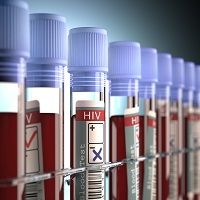Article
No HIV Transmission Found in Condomless Couples Using ART
Author(s):
Condoms help prevent the transmission of the human immunodeficiency virus (HIV); however, a new study found that they aren’t necessary when the infected person is on antiretroviral therapy (ART).

Condoms help prevent the transmission of the human immunodeficiency virus (HIV); however, a new study found that they aren’t necessary when the infected person is on antiretroviral therapy (ART).
European researchers conducted the PARTNER (Partners of People on ART — A New Evaluation of the Risks) study to find the rate of HIV transmission between heterosexual couples and couple involving men who have sex with men. The cohort included 888 serodifferent couples (61.7% heterosexual) from 14 different countries in Europe. All of the participants reported not using condoms during sex from September 2010 to May 2014. However, those infected with HIV were on ART and had a HIV-1 RNA load less than 200 copies/mL.
The couples were followed for an average of 1.3 years and the median amount of times they had condomless sex was 37 times a year. But is ART so effective that it protects people from becoming infected with HIV even without condoms? According to the results in The Journal of the American Medical Association (JAMA), the answer is yes.
- Related: HIV Epidemic Continues to Persist in Gay, Bisexual Men
Eleven partners (10 men who have sex with men and one heterosexual) who were HIV-negative at the beginning of the study were infected with the virus by the end. However, they did not have phylogenetically linked transmission — meaning that they did not become infected from their partners.
“The HIV virus can be divided into several sub-groups, each with its own genetic characteristics, and this makes it possible to see whether the virus is genetically similar to a partner’s,” lead researcher Anna Maria Geretti, MD, from the University of Liverpool in the United Kingdom, explained in a news release.
Therefore, there were no transmission cases found between any of the couples when the HIV-infected partner was on suppressive ART.
“The results clearly show that early diagnosis of HIV and access to effective treatment are crucial for reducing the number of new HIV cases. As soon as a patient with HIV is on treatment with a suppressed viral load, the risk of transmission becomes minimal,” said Jens Lundgren, MD, from the University of Copenhagen.
This research is ongoing as the gay couples will be followed for three more years to gather long-term data on HIV transmission for anal sex. Those results are expected in 2018.
Also on MD Magazine >>> North America’s Role in Spreading HIV in the Western World





